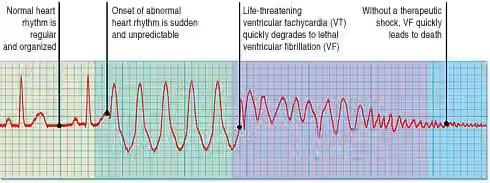Can You Use an AED on Someone in a Non-Shockable Rhythm and What Happens Next
- Shane Yole
- Aug 13
- 3 min read
In a cardiac emergency, every second counts, and knowing how to act quickly can save a life. Automated External Defibrillators (AEDs) are lifesaving devices designed to assist in cases of sudden cardiac arrest (SCA). However, a common and critical question arises: Can you use an AED on someone in a non-shockable rhythm? Understanding how AEDs work and the heart rhythms they treat is crucial not just for first responders but for anyone who might witness a cardiac emergency.

Understanding AEDs and Their Functionality
An AED is a portable device designed to analyze the heart's rhythm and deliver an electric shock if needed. It is most effective in cases of sudden cardiac arrest when the heart stops effective pumping. AEDs are user-friendly, providing verbal prompts and visual instructions.
AEDs recognize two main shockable rhythms—Ventricular Fibrillation (VF) and Ventricular Tachycardia (VT). For example, VF accounts for approximately 60-70% of all cases of cardiac arrest. These rhythms involve chaotic electrical activity that prevents the heart from pumping blood. Conversely, non-shockable rhythms such as Asystole and Pulseless Electrical Activity (PEA) mean the heart is not capable of responding to a shock, indicating a more severe, underlying issue.
What Happens in a Non-Shockable Rhythm?
When an AED is attached to someone in a non-shockable rhythm, the device will analyze the heart's rhythm and relay the message that no shock is advised. It's a vital moment that underscores the importance of understanding the device's limitations.
In cases of non-shockable rhythms, the heart may still show some electrical activity, but it's insufficient to produce a pulse. Research indicates that outcomes for patients with PEA are grim, with only 10-20% of those patients surviving to hospital discharge. Therefore, immediate medical attention is essential. At this point, the focus shifts to delivering high-quality cardiopulmonary resuscitation (CPR) to maintain blood flow to vital organs until emergency medical services (EMS) arrive.
The Importance of CPR in Non-Shockable Rhythms
In situations involving non-shockable rhythms, CPR becomes the key intervention. High-quality CPR can sustain circulation and oxygen supply to the brain and other essential organs. The American Heart Association recommends performing chest compressions at a rate of 100 to 120 compressions per minute, allowing for complete chest recoil between compressions. Aim for a compression depth of 2 to 2.4 inches.
Rescue breaths can also be administered, but emphasis should primarily be on continuous chest compressions. Each minute without CPR decreases the chance of survival by about 10%. By continuing CPR until EMS arrives, you dramatically enhance the victim's chances of survival, which may include interventions like medication or advanced airway management.
When to Use an AED
While AEDs are ineffective for non-shockable rhythms, they are lifesaving for shockable rhythms. For instance, if you encounter someone who is unresponsive and not breathing properly, the first step should be to call emergency services and quickly retrieve an AED if available.
Once the AED arrives, apply it promptly. The device will analyze the heart's rhythm and provide real-time instructions. If a shock is advised, ensure that no one is touching the patient before the shock is delivered to maximize effectiveness and prevent injuries.
Training and Preparedness
Understanding how to use an AED and perform CPR is vital for everyone, especially in high-risk environments such as schools, workplaces, and public areas. Many organizations, including the Red Cross and local fire departments, offer training courses on AED usage and CPR techniques.
Being prepared can significantly impact the outcome of an emergency situation. Training empowers you to identify shockable versus non-shockable rhythms and know how to respond effectively. In fact, studies have shown that trained bystanders are 2.5 times more likely to perform CPR than untrained individuals, highlighting the importance of education.
Final Thoughts
While you cannot use an AED on someone experiencing a non-shockable rhythm, the device is still critical in emergencies involving shockable rhythms. Grasping the difference between these rhythms is essential for an effective response to cardiac events. When an AED indicates that no shock is advised, immediate CPR is vital to keep blood flowing until professionals arrive.
By being knowledgeable and prepared, you can play an important role in saving a life during cardiac emergencies. Consider participating in a CPR and AED training course to equip yourself with the essential skills and confidence needed to respond effectively. Remember, every second is critical, and your actions could make a life-saving difference.










Comments